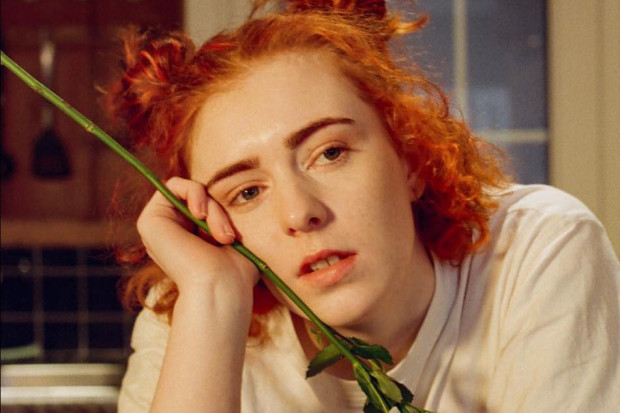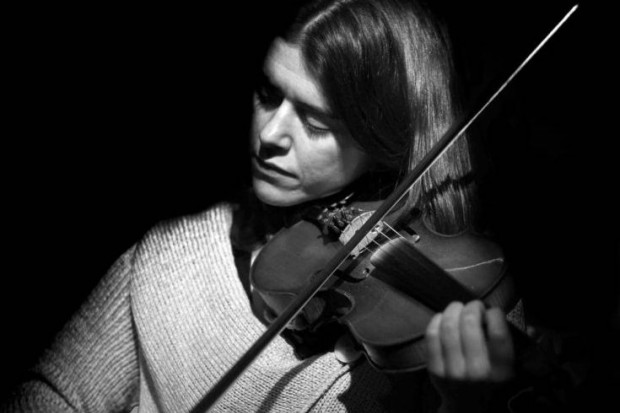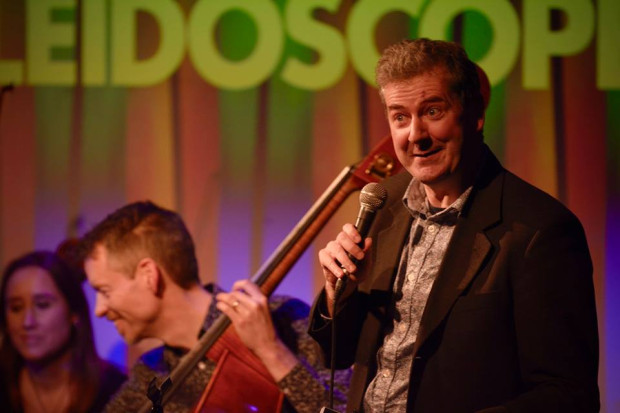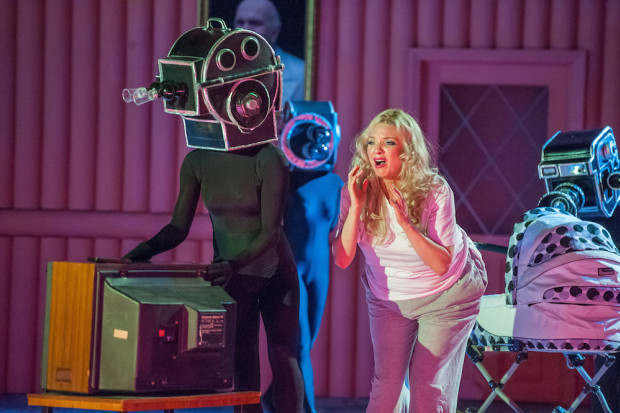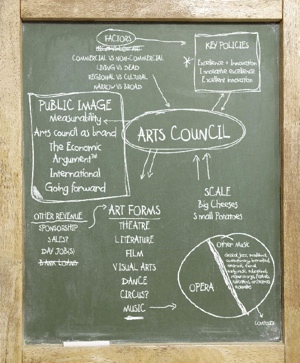
Why the Arts are Funded
The challenges facing the funding of the arts go beyond the current economic situation. In the absence of clear guiding language from policy documents, and an ambition to try and do everything, arts councils thrash about during a crisis, wreaking bigger change than the numbers alone would justify. All artists can do is read the tea-leaves after the cup of funding is drained, writes composer John McLachlan
This is the story of what happens when you wake up one day and wonder: ‘Why are the arts funded?’ For anyone who takes the time to think about it, it is apparent that state arts funding exists for a complex panoply of reasons, seeing as it covers everything from a large opera company to a small travelling circus. It is so complex that you will not find any attempt to justify arts funding by reading arts plans or policies. It is simply a given that funding for the arts is a good thing.
If, like me, you are actually involved in applying for some of that funding as an individual creative artist, an advocate for composers, and as a minor producer of arts events, it is worthwhile occasionally to step back and take in the bigger picture. Looking at the origins of arts councils, we may get a clue as to what their original purpose might have been. Arts councils are a phenomenon found mostly in countries which have a historical link to the former British empire. Other countries, in the main, tend to have different arrangements such as a government department directly in charge of culture.
The two models differ in principle: an arts council is, or strives to be, an arm’s-length body that decides a country’s artistic priorities independently of the Government of the day, to allow a better long-term vision than might be the case, whilst a culture department treats culture (and the arts) on a similar footing to other government competencies. In France, for example, the department of culture operates under the general constitutional requirement that citizens have the right to equal access to culture. In practice, the key difference between the systems is that areas such as education and broadcasting have to take far more cognisance of population-wide cultural and artistic goals in the French model.
The Arts Council of Britain (later divided into councils for England, Wales and Scotland, with Northern Ireland an even later addition) was the first of the national councils set up in 1946. It had a predecessor from 1940, and the purpose of both bodies was to promote and maintain British culture. Presumably it was felt that the world was changing and that culture needed a significant boost. Add to that the fact that education was made compulsory up to age fifteen from 1947, and universal healthcare was introduced in 1948, and it is clear that after the war the state believed a fresh start was needed in the overall organisation of society, in particular in relation to its needs. A massive strengthening of the state’s commitment to meeting those requirements ensued, in areas where it had stood back for centuries.
It is part of the background noise in our understanding of society that the private sector is the financial engine of society, while the state takes taxes from there and ploughs them into inefficient and unproductive areas. J.K. Galbraith points out in The Affluent Society that no private sector is going to provide clean water, policing, teachers, healthcare, waste management and so forth universally and fairly across society, and he notes also that the private sector of the economy is a purveyor of things we don’t really need, while advertisers try to convince us that we do. If you are to choose between a gaudy expensive handbag filled with i-things, or an education for the next generation, you are choosing between the state sector and the much-vaunted private sector. Maybe artists should reflect that; if we are stuck in the state sector, at least we are in good company there.
From the outset, the commitments made by countries to arts and culture were divided up in all sorts of ways, and contained many contradictory currents pulling in opposing directions. Divisions such as high art versus low art (terms that are currently absent from the debate as they are now politically incorrect), were resolved by a clear and open bias in favour of one side. Other opposing cultural pairs that continue to give headaches to cultural policymakers are: commercial versus non-commercial art; heritage art versus innovative creation (or ‘living artists versus dead ones’); pure versus functional art; quality versus quantity (or elite versus popular, replacing high versus low), regional versus central, and ethnicity: narrow versus broad. Again these competing interests tended originally to be partially resolved by a simple bias to one side of the pair. In order to avoid complete stasis stemming from these contradictory aims, in recent times the policy statements have become more cagey and politically correct, so that today you will simply not find (or detect) a bias to either side of any of these pairs. In any case, attempting to be all things to all men (where ‘men’ is understood to be regardless of gender, ethnicity, political and religious belief, sexual orientation and age, obviously) is a useful argument for enlarging the funding base for a council. However, there will always be a ‘context’ in the background that assumes a bias: for instance, if an art form is existing purely commercially for years and suddenly turns to the arts council for money, it faces a struggle. However, the record shows that it will win this struggle if it tries hard enough, as happened with circus, jazz and popular music. This is why the remit of a council tends to enlarge over time, while the ‘context’ is anything but a constant.
Having got the hang of never saying no, arts councils are forced to reach for more and more positive sounding language about everything, so that no arts strategy is complete without a huge dose of anodyne phrases such as ‘rewarding excellence and innovation’ while rarely mentioning specifics.
But does this really matter? Well, it makes the reader of the policy wonder if there exists a parallel internal policy, perhaps not written down anywhere, that actually says something about taking a side on some of the conflict pairs (not all are either/or pairings, to be fair). That may be far-fetched, but what seems very likely is that the policy becomes a giant blob of ambition that a single council can never wholly achieve – so it moves forward on the parts it holds most dear. That’s the bit that may be less publicised. It is also possible that, through accident or lack of expertise in the council, a small sector or arts genre is suddenly weakened: the more ideal your ideals the more you are guaranteed to fall short of them, and the less controlled that fall will be. That is why fudge is not always a good lingua franca for policy. Those problems become more pressing in times of societal change, such as at present. In the absence of clear guiding language from the policy documents, councils tend to thrash about during a crisis, wreaking bigger change than the numbers alone would justify. Sometimes that brings chaos to a whole sector, as just happened to classical and contemporary performance in the Republic of Ireland.
The more money an arts council has, the more another problem arises: addressing clients at different organisational scales. This is one of many areas of conflicting interests that does not resolve to a simple pairing. It is not wise to universalise the rules governing grant aid if one grant is for €2,000 and the next is for €1.2 million, and the sensible council does not do that. However, the English Arts Council at present seems to have a clear bias on the scale issue: its website and policy statements fail even to mention the individual artist as a client group, and application procedures seem skewed away from aiding artists directly. The Council appears to fund organisations only; these may in turn reward the living artist, where appropriate. Yet it is hard even to see this bias in its very cagey policy language. Does the bias exist simply because it is trying to give away £393,000,000 without drowning in paperwork? Only close inspection of the 2009 annual review of the Arts Council of England gives the truth (p. 89, Word version): less than one per cent of its budget was given to individual artists directly, and all but £39,000 of that was given in the North East, so too bad if you are a composer living in any other region, including London! By contrast, the Arts Council of Ireland is quite rare and possibly unique in its level of stated commitment to the individual artist. The aspiration of making it possible to make a living from creative work is stated. It supports creative artists through stipends (to members of Aosdána, an affiliation of artists), bursaries, commission awards, travel awards and other programmes where individuals may apply. In their last published annual report (2007) the figure to individual artists (all types, performers included) was around ten per cent of total grants. In spite of all that, the majority of artists live well below the average industrial wage, and if they are above it, it is because they and/or their spouse have another job.
As well as the scale problem, there is another problem: the client jungle. Again this is a non-dual set of conflicting interests which gets worse the more money there is. In a single sector, such as music, you have organisational competition from clients of different weights representing different regions and genres of music; analysing this and evaluating accurately the effectiveness of clients relative to one another is beyond current mathematical modelling. It comes down to client advocacy, and if a genre such as pop, jazz, contemporary or traditional music comes together to advocate more successfully than heretofore, the money to other genres must suffer accordingly. Even within a genre, you may have organisations fiercely backbiting others because of their similarity of function. This year in Ireland, the cut to ‘music’ was disproportionate simply because of a policy of minimising the damage to ‘opera’ (music and opera are classed as separate endeavours, with almost equal levels of funding, despite the fact there are three opera clients, yet dozens of music clients). The total Irish Arts Council music funding for 2010 is €3.5 million. That’s 700 metres of motorway.
Another thing that adds to the complexity of the analysis of reasons behind arts funding is the proportion of cover offered. Many (generally smaller) clients get little money from elsewhere, even from the public. Other clients require about 50% of their total to come from steady state subsidy, which means they also exist in the market, like a semi-state, while a third category requires ‘seed money’ – a one-off support to something that will become independently commercial in time. An arts council that decides that the first category is unattractive, owing to a prevailing ideological weather pattern, will probably stymie future development in the arts, since creative innovation tends to come from the smaller entrants, mostly in that first category.
But what happened to the original question: why are the arts funded? Bear in mind that no one wants to be pinned down on that one, but the higher up you go in the political chain, the closer you are to the people who think about it. This is the refined strata above all councils. We mere mortals have to read the tea-leaves after the cup of funding is drained.
We can extrapolate the basic reason: ‘It is a good thing because it is good for society’. At the political level, naturally, responsibility demands this to translate into measurable gains to society. The relevance of an art form, at this level, can be determined by the number and priority of the audience reached. Unfortunately, because the political cycle is short-term, and the funding cycle even shorter, measurable gains preclude any long-term idealism about lifting general standards (alternatively, they don’t need lifting, since everything selected for support is, by definition, excellent). Instead, as society changes by itself, the arts policies follow rather than lead the changes. The arts, apparently, must address themselves to the changing needs of societies, and not waste time thinking that they are there to change society’s needs. As an extreme example, if you ask the Arts Council of Northern Ireland how the small grants are decided, you will be told of an arcane system whereby you receive points for (a) voluntary element to your organisation, (b) community-level involvement in your organisation, (c) remoteness of the community you reach, (d) level of deprivation of that community… and so forth. They would get quite excited if you pitched an amateur concert by immigrant travellers in a prison ward. That is not the only form of funding they offer, but it reflects nonetheless a strand in arts funding that is pure social engineering, and a less overt form of this exists in other (less) strife-torn regions of the UK. Such a scheme seeks to change the very nature and aims of arts production companies. In a time of shortage, there can be a bizarre dual prioritisation of the rich and powerful, and the deprived – with the middle, as usual, squeezed.
If you happen to be a small-scale client, in particular a composer, it is impossible, when considering all this, not to feel like a leaf hanging in the wind. An arts council, with its language of inclusion at the door, may have priorities that are only available if you ask specific questions, or it may have them completely hidden. When it looks to praise innovation and flexibility, it turns out that you need to be flexible and innovative in how you define yourself, and what sort of work you are prepared to do. You are an applicant. The grander and firmer your self-defined goals, the less you will be able to fit in with the goals of the council. You can only be on one side of every conflicting pair of priorities. This is why many composers and artists avoid a dependent relationship with arts councils. It is structurally impossible for a living artist to feel secure there. The whole small genre of contemporary music is likewise insecure. As a small specialist area, it has relied on its reputational connection to the glorious past of Western art music and a near-vestigial commitment to the improvement of society dating back to the post-war origins of arts councils. But as that sounds too patronising, the genre increasingly downplays the connection, and points instead to a shaky rhetoric of edgy social relevance. In effect, it stands on two rather lame legs pointing in opposite directions. Not a good way to face into a hard fiscal winter.
Published on 1 April 2010
John McLachlan is a composer and member of Aosdána. www.johnmclachlan.org












